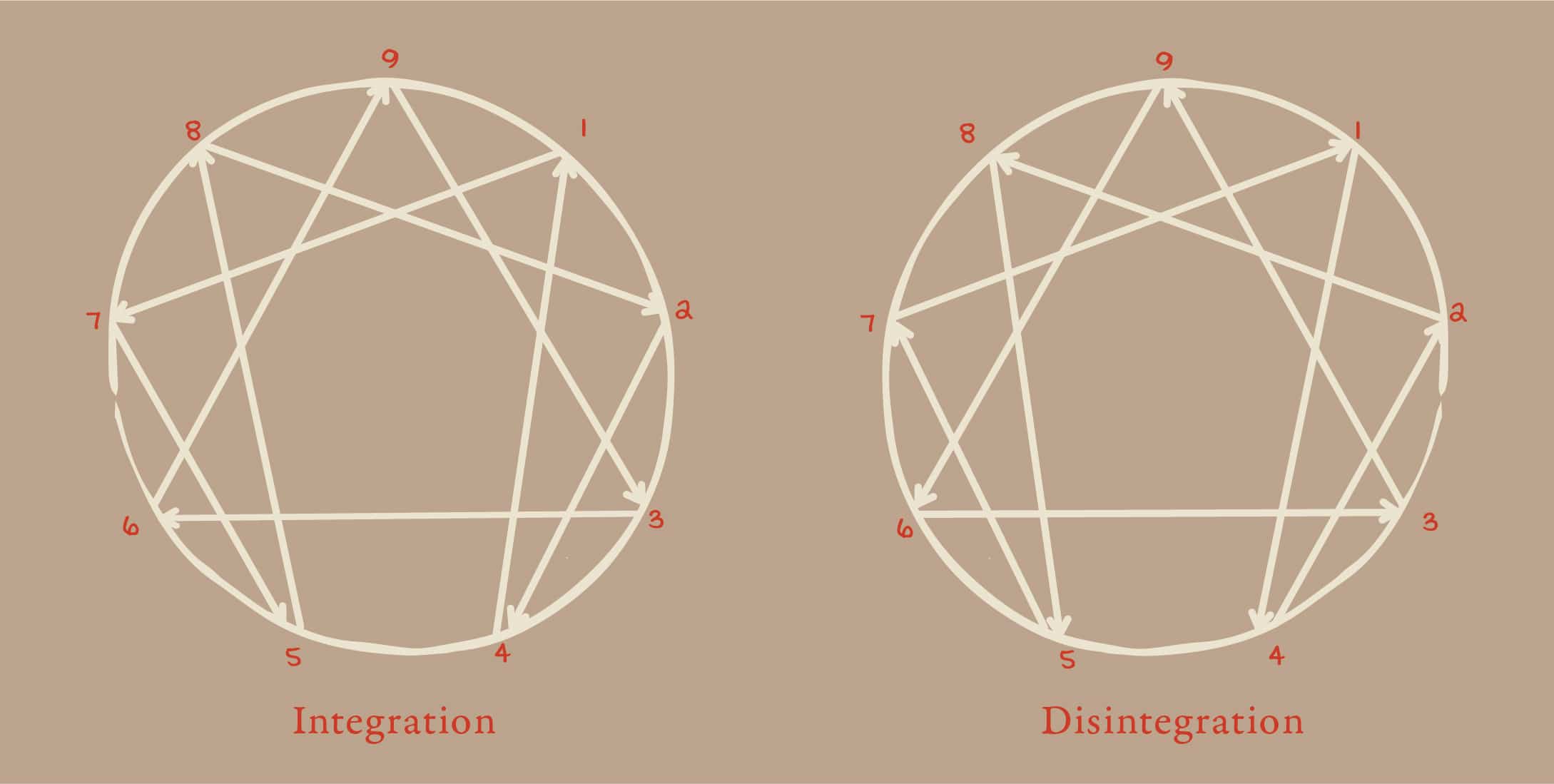
Enneagram Part Three: Head Center
A Dynamic Symbol
Monday, March 9, 2020
One of the most confusing aspects of the Enneagram can be the nine lines and “arrows” that seem to crisscross the Enneagram symbol but are the basis of its foundation and wisdom. In The Sacred Enneagram, Chris Heuertz explains what these lines mean:

One fundamental component of understanding [Enneagram] type involves the lines [and arrows] within the Enneagram’s symbol. These crisscrossing lines show us the movement of our type when operating in a healthy or unhealthy state.
There are several schools of thought about the traversing of lines inside the Enneagram, each with diverging philosophies regarding their implications. For instance, the Enneagram Institute refers to the lines as the directions of integration and disintegration; the Enneagram in the Narrative Tradition refers to them as our Security Types and Stress Types; the Chilean grandfather of the modern Enneagram, Claudio Naranjo, used the language Heart Points and Stress Points; and H. A. Almaas originated the notion of the Soul Child, which Father Richard [Rohr] and Sandra Maitri continued to develop. [1]
These are all different ways of describing the dynamic of each type as it presses into growth or reverts to patterns of self-sabotage. This is where we encounter the uniqueness of the Enneagram as a character-structure construct: it offers both a portrait of healthy and a portrait of unhealthy for each type, and prompts us to identify honestly where we are functioning on that spectrum. This might vary from day to day or even hour to hour, but the gift presented to us is greater awareness that leads to psychological and spiritual growth. . . .
Integration or security allows our dominant type to borrow the positive traits of another type. For example, a healthy person dominant in type One integrates or borrows some of the positive traits of type Seven by relaxing their inner drive for perfection and allowing themselves to become a little playful and spontaneous. . . .
When they lose themselves . . . Ones disintegrate toward the Four . . . [and] believe their own lie that they alone are the only ones who understand and value excellence—that no one else has the capacity to grasp what is required for goodness to be actualized in the world.
A newer theory that I happen to agree with is that our path of disintegration is that innate self-survival reflex that stops our fall by reaching out to the lower-level manipulation techniques of another type as a way of getting our attention—letting us know we are falling and if we don’t catch ourselves we’ll “break our arm” or worse.
While it is helpful to see the full picture of the type from which we borrow in health, the key for all of us is to focus on health and growth in our [own] dominant type. To recognize ourselves in integration requires that we accept the best of ourselves in our dominant type. . . .
Giving ourselves to this path requires a disciplined cultivation of spiritual depth accessible only through faithful contemplative practice that brings us into the transforming presence of a loving God.
Reference:
[1] See previous Daily Meditations on the Enneagram from the perspective of the Soul Child: https://cac.org/enneagram-week-1-summary-2016-04-30/ and https://cac.org/enneagram-week-2-summary-2016-05-07/.
Adapted from Christopher L. Heuertz, The Sacred Enneagram: Finding Your Unique Path to Spiritual Growth (Zondervan: 2017), 65-68, 69, 116, 157.

